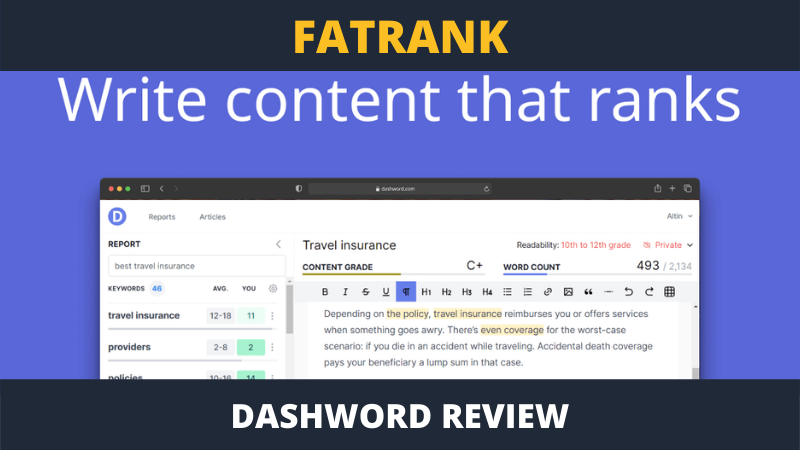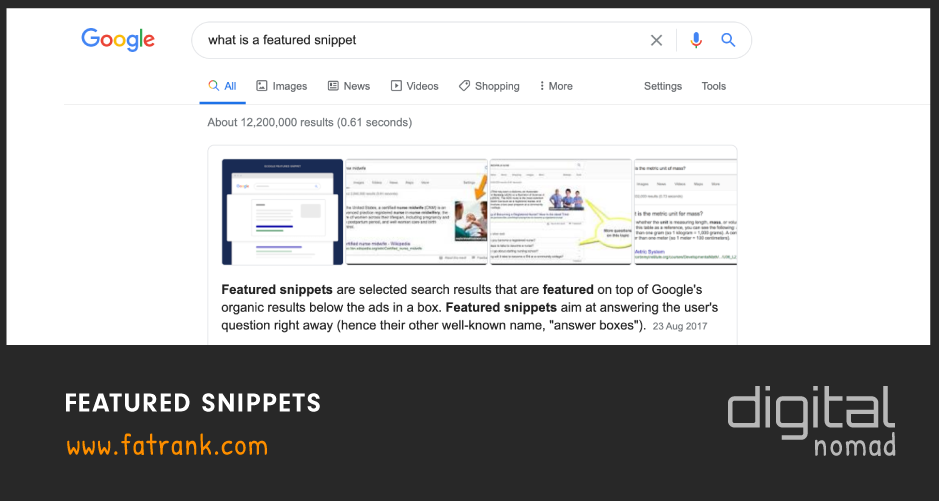
Google Fresh Content Ranking Factor
Putting it simply the Google fresh content ranking factor basically refers to putting text on your site which is new. It also means regularly updating the text to ensure there is freshness within that page.
Putting fresh content on your site keeps the page up to date and lets Google know that your site is still relevant to the topic. If you don’t add new content your website may be seen as outdated. This can produce a negative effect when trying to rank on Google.
For the very best results, it is important that you think about onpage content and latent semantic indexing. Doing this will help you rank better on the various search engines.
Your Google fresh content ranking factor is an essential key to how your pages are viewed, ranked and received. Put very simply, it’s incredibly easy for your content to get lost in the sea of information out there. Because of this, it has to be constantly updated to stand out from the crowd in order for it to be relevant.
There are many search engines out there but Google is the market leader by some considerable way (think about it, how many times have you said, ‘I’ll Google it’).
Contents
- Google Freshness Algorithm
- Website Updated Regularly Are Rewarded?
- Updating Website Content
- Webpage Freshness Ranking Factor
- Fresh Text To Existing Blog
- Re-Optimizing Content on Old Articles
- Fresh Social Signal Helps
- Fresh Content SEO
- Every Page On a Website Must Be Updated Recently To Consider The Website Updated/Maintained?
- Insane Google Ranking Boost
- Google Freshness Factor
- All SEO Related Posts
Google Freshness Algorithm
There’s so much online activity now that Google actually changed its Freshness algorithm to compensate for it. For example, a website that updated its content five times a month ten years ago might have been considered a ‘Fresh’ site.
The same site might have to refresh its data five times a week now to be on the same level of exposure. Think of it as a Tamagotchi, one of those virtual pets that you have to look after – if you don’t nurture it, it will just fade away and die.
When taking into account adding new text onto your various pages, it is important that you are aware that you are not trying to rank different pages for the same keyword. This is known as content cannibalisation and can be quite bad when trying yo rank your various pages on search engines.
An excellent article on how the Google Freshness algorithm has been a game changer can be found here: http://www.searchenginejournal.com/google-algorithm-history/freshness-update/
Website Updated Regularly Are Rewarded?
Do you realise that websites that receive regular updates are actually given rewards? It sounds kind of obvious once you think about it. Play by the rules and update your pages regularly and your Google fresh content ranking factor will start to climb steadily.
The definition of ‘regularly updating your content’ will differ vastly from one niche to another. If your site deals with live football scores then it might refresh the text every minute or so. However if your niche is a new smartphone then a regular update may only be when a new model or software upgrade is launched.
Google has ways of compensating for this so it’s up to you to keep on top of your content if you want that greater SEO exposure. If you are new to SEO, you might want to read our introduction to search engine optimisation.
If you ask a child to tidy their room with the promise of pocket money as a reward, they’ll do it. It’s the same principal with Google Freshness. Keep your house in order, looking fresh and up to date and you’ll get a reward, only the reward here is more views for your pages.

The best thing you can do at the start is to assess your current stature in the Google search rankings. If some aspects of your site are doing better than others then concentrate on the weakest links first.
This isn’t to say you should forget about the better performing pages, far from it. But by targeting the under-performing parts first your site will automatically generate more viewings. This will have the knock on effect of your site as a whole becoming more noticeable. Then you can improve your other content from there.
Remember, more views equals more rewards. This is why we would recommend showing off each of your articles on social media platforms too. Social media marketing success is getting to be more common and by sharing articles and pages you have written. You are able to generate more traffic to your site from people seeing the shared posts.
But how can you improve the content that is holding your site back? What tools are available to ensure that your site is as fresh as it can be so it can start earning those lovely rewards?
Use the following link to be taken to a fantastic short article which explains what aspects of freshness you control and how it affects your overall Google ranking : http://searchenginewatch.com/2016/09/26/guide-to-google-ranking-signals-part-4-content-freshness/
Updating Website Content
Updating your website content is a foolproof way of making it become fresher. Google might rank new articles and additional text to existing pages higher purely because of its publication date. However it needs more than this to keep it in the public conscience.
If you are relying solely on the inception date to make your page more popular then you will find that it becomes irrelevant very quickly. You could change the body of your text to conserve freshness; a drastic overhaul of a page will score highly on search engines whereas small changes may not even register. It’s all about finding the right balance.
Again, different niches have different values attached to them. So something like a newspaper whose article naturally changes very rapidly will have a different Google fresh content ranking factor than a sofa manufacturer whose articles will change dependent on the current styles and current promotions.
The point is to abide by the meaning of ‘fresh’ for your particular niche and Google will notice this accordingly.
Sometimes it is easier to create completely new pages than to try and rehash older ones (i.e, blogs). This not only has the advantage of containing fresh information for your viewers. It also alerts Google to the fact that the site is uploading new content and this will enhance your ranking position.
When thinking about creating new pages, you might want to start to create supporting articles to strengthen your existing pages.
Webpage Freshness Ranking Factor
How recently the page was published will determine your webpage freshness ranking factor. Google loves fresh content and there are a multitude of different ways in which it can rank your website. However you do have to be smart with how you use it. Google monitors three different types of searches when it comes to articles:
- Regularly occurring events – This is any event that takes place on a regular basis. Examples include the draw for the Champions League or a general election. It is basically something that you would most probably want the most recent information about rather than historical news.
- Frequent Updates – Searches for information that changes frequently but isn’t a regularly occurring event. An example of this could be the launch of a new games console.
- Hot Topics & Recent Events – Anything that begins trending on the web and users need information on it straight away. This could be anything from a video that has gone viral like the laughing woman wearing the Chewbacca mask, to a celebrity announcing a divorce. Information on these topics may only a few minutes old and have quality content.
Google then starts looking for increased spikes in relaying this type of information on social media, news outlets and blogs to see what is ‘fresh’. If your article meets the criteria then it will sail up the Google rankings and make your content more visible.
The digital world can be difficult, especially with all these rules you have to abide by. However it’s all about consistency; if you have 300 articles you could use for your web page, don’t just put all 300 hundred at once and expect it to keep you at the top of the Freshness rankings because it won’t.
Yes, you may see a short term impact but you won’t sustain traffic to your page. Consequently your visibility will drop down rapidly. Manage them appropriately, post the most relevant ones first and then filter in the rest over time. This helps keep a continuous flow of traffic coming to your site and your freshness rating high.
Fresh Text To Existing Blog
Adding fresh text to an existing blog will do two things; 1) Keep the content up to date, making it relevant, and 2) it makes you more visible to the Google fresh content ranking factor. By producing new content often and generating a steady stream of traffic to your site, you make it that much more noticeable to Google and it will start to place you as an authority in that particular area.
Have a look at this video to see how you can alter your content to increase traffic to your site:
It works very much as a self sustaining system – the more you post, the more traffic you attract. The system will class users commenting on your posts as updates to your page and Google takes notice. This then continues the whole cycle.
The very nature of a blog is that it should reflect the here and now, the very personification of an easy way to access followers and potential clients on a global scale almost instantly. If your blog has laid dormant for a while with no new updates, not only does it defeat the object of having a blog but it will disappear without a trace with so much competition to go up against.
Sites such as WordPress, Tumblr or Wix have made it easier than ever to publish blog content. So why not take advantage of the technology and use it to grow your blog’s readership? It may be that your existing blog articles just need a tweak to be effective again; a new photograph or an update or rewording of a previous story can work wonders for your Google content ranking factor.
Try hyper linking articles from other prominent sources such as Wikipedia. This can increase your online appearance, also include more LSI words to trigger Google’s interest. You can find out more about the best keyword research techniques on our site. Alternatively, read the following article for a more indepth look into this subject:
http://unamo.com/blog/general/optimize-existing-content-boost-performance-rank-2
Re-Optimizing Content on Old Articles
By re-optimizing content on old articles you can bring them back to life very easily and save yourself a lot of trouble creating new content. Quality articles will always beat old content that is full of padding – people won’t stand for it.
If you can create unique content then you’re off to a winning start already, but keeping your content succinct and to the point will hold their attention and keep them coming back for more.
Bullet points and short paragraphs are a great way of holding an audience. But your page must keep them captivated enough so that they come back for more. Use SEO optimised images, videos and links to other sites to expand your potential audience to aid this. SEO is mainly about content and links. We recommend the best SEO training course if you want to know how to completely revamp your site.
By reinvigorating old content with a splash of new information, you can turn some old articles into today’s hot topic.
Fresh Social Signal Helps
Fresh signals via social media is another huge freshness boost your websites need.
We strongly recommend you getting the plugin revive old posts which can automatically share a status linking back to your website once a day randomly. Purchase the social media plugin now.
The automated freshness of social signals back to your website is very important for search enginers.
Fresh Content SEO
The so called ‘Googlebots’, programs that scan the internet for websites, are constantly on the lookout for new data. The more often you update your articles, the more frequently the Googlebots will notice. If necessary you can find more about the Google bot crawl budget optimisation on our site.
When that happens, your fresh content starts to fulfill its SEO role and your site will get more traffic. Each new update will make the search engines take notice. So if you update it often enough you could even create a new listing on the Google index.
The more traffic you generate to your pages increases your chances of a regular audience. The bigger that audience grows the more Google will recognise it and rank your page higher and higher. You can find the top five reasons why fresh content is so crucial to your SEO here:
http://seositecheckup.com/articles/5-reasons-why-fresh-content-is-critical-for-your-website-and-seo
Every Page On a Website Must Be Updated Recently To Consider The Website Updated/Maintained?
Look at it this way; if you can’t be bothered to keep your pages updated and relevant why would you expect someone else to interested in visiting it, especially Google? You should update every page on a website regularly to consider the website updated or maintained.
Imagine you have a site with thousands of different articles you could update but only concentrate on a handful. Google is not going to notice you because the site as a whole would be classed as ‘dead’.
The ten ways that Google might determine your content’s freshness are listed in the following article: http://moz.com/blog/google-fresh-factor-new
Insane Google Ranking Boost
They do say that sometimes the simplest ideas are the best. This is no different with the Google fresh content ranking factor. There is no need to over complicate things; just administering a few simple changes will give your pages an insane Google ranking boost. Here are five key things you can do to give your site the best possible chance of receiving a Google ranking boost:
- Use keyword phrases – Give your page a title and just stick to that subject. Don’t be tempted to ramble onto something else. Make sure your keyword is highly visible in your content and you place it within the first paragraph if possible.
- Keyword Density – Make sure that you repeat your keyword multiple times throughout the article, as the more you mention it the easier it is for Google to pick up on it. Use natural phrasing though, don’t try to cram references in there that don’t sound right.
- Name Your Pages – Sounds obvious, but if you have a title that includes the keyword then you’ll be much easier to find.
- Links are Important – Linking out to authority pages along the same subject matter will give an enormous boost to your Google rankings. By linking in articles from trusted popular websites, Google associates you with them. You might also want to consider silo structure internal linking if you want to improve your website and strengthen all pages.
- Make Your Design Accessible – If a site takes too long to load because it has a vast amount of high definition content, people won’t stick around to wait for it. Likewise, you need to arrange it organically so that every action you perform on it seems natural. If users have to start hunting for the content they want then they won’t come back a second time.
Google Freshness Factor
The Google Freshness factor can change at the drop of a hat in today’s worldwide, 24/7, instant access culture. It’s like the must-have toy at Christmas; people fight and claw to get it at all costs. Then just as quickly the phase has gone and the new must-have toy replaces it.
Trying to optimise your SEO in a climate such as this takes stamina and hard work. The fresher your content is, the more likely the Google algorithms will notice it. The job the Googlebot has is deciding how long a period of time is it would consider a subject ‘fresh’.
For example, something like Brexit is an ongoing story. But most people want know the most recent developments of the deal rather than historical data. So, if someone types in ‘Brexit’ in the Google search bar, the chances are they want to know about something that happened this week. Not something that happened on the Leave/Remain campaign trail at the very beginning.
If the latest news that week is Brexit reaching Stage Two of the talks, what the algorithm then has to determine is how long people consider that news hot before some other aspect of the story replaces it.
It does this by measuring the amount of traffic related to that topic. If people are writing lots of stories, tweets, blogs etc. about Stage Two, then the algorithm will pick it up and promote it to the top of the rankings.
Traffic is important on a site. The engagement rank – SEO click through rate traffic algorithm is definitely something you would need to bare in mind. What is the point in writing these fantastic pages, updating them with fresh content and building links if there is no traffic?
It will demote Stage Two once it sees the spike start to decline and something else overtakes it. The algorithm can revive it if Stage Two becomes an important factor of the negotiations again. This is where links to or a remoulding of older pages can become advantageous.
Google designs the algorithm specifically to know what is up to the minute and what is not depending upon the particular field it is ranking. You can read a more thorough explanation of how the Google ranking factor comes into play here:
http://search.googleblog.com/2011/11/giving-you-fresher-more-recent-search.html
All SEO Related Posts
Check out the in-depth list of SEO posts.
- Absolute Links vs Relative Links

- AI Content Detection

- AI Copywriting Software

- Artificial Intelligence For Content Writing

- Autoblogging AI Review

- Bolded Keywords in Google SERP

- Content Briefs

- Content Cannibalisation Google Penalty

- Content Decay

- Content Doctor

- Content Expansion

- Content Harmony Review

- Content Plan Roadmap

- Content Strategist

- Content Team

- Dashword Review

- Featured Snippets

- Focus Keyphrase

- Google Duplicate Content Penalty

- Google Fresh Content Ranking Factor

- How To Create A Topical Map

- Identify The Root, Rare, and Unique Attributes Of An Entity

- Jasper.ai Free Trial

- Onboarding Writers

- One Page For One Corpus

- Ordering Content SOP

- Page Optimizer Pro

- Page ReWriter Review

- Passage Ranking

- Progressive Content Optimisation SEO

- Search Perspective Frameworks

- SEO Avalanche Technique

- SEO Content Audit Guide

- SEO Content Optimization Tools

- SEO Content Writers

- Silo Internal Linking

- Standalone Content

- Stealth AI Writer

- Surfer AI Writer

- Surfer SEO Review

- Text Optimizer

- Text Structure

- The SEO Power of Concise Writing

- Topical SEO - Create Supporting Articles

- Use Topic Review

- Website Content Uploader

- Why Is Content Veggie The Best AI Content Tool for SEO?

- Workello

The full list shows the various SEO strategies to help your online marketing knowledge grow fast in July 2024.

About FatRank
Our aim to explain and educate from a basic level to an advanced on SEO and Social Media Marketing.





